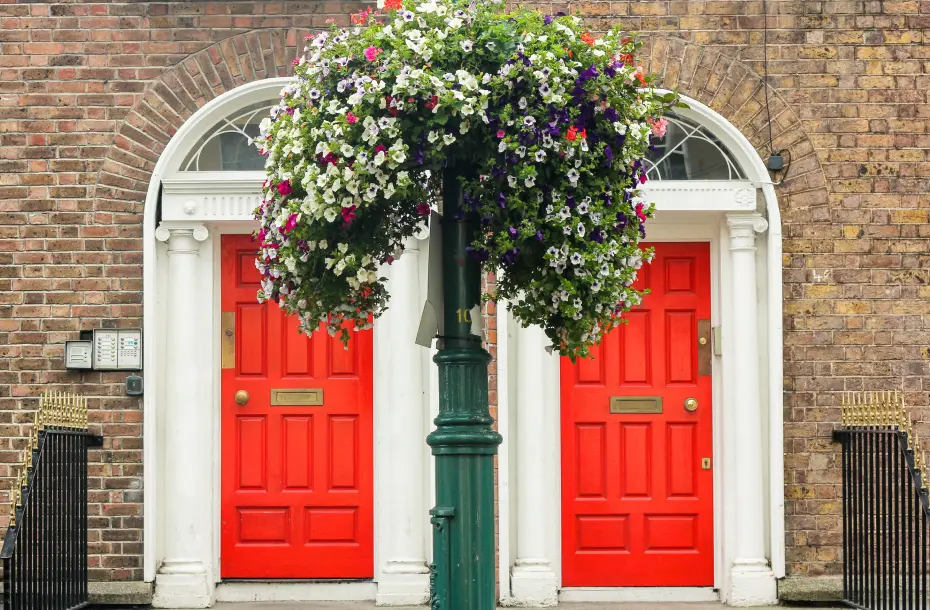Traveling by ferry to Dublin offers a stress-free, scenic, and enjoyable alternative to flying. Located on Ireland’s east coast, Dublin serves as both the country's capital and a hub of culture, history and entertainment. Whether you're a history buff, a music lover, or a foodie, Dublin has something for everyone. This guide explores ferry connections to Dublin, transportation options once you arrive and highlights the top attractions in this lively city.
Dublin is one of Europe's most vibrant cities, blending a rich history with contemporary culture. Choosing to travel by ferry has its unique advantages:
- Relaxing journey: Enjoy stunning sea views and modern onboard amenities
- Cost-effective travel: Usually more economical than flights, especially for groups
- Flexibility: Many ferry services offer options to bring your car, allowing you to explore Ireland freely
- Sustainability: Ferries are an eco-friendlier mode of travel compared to planes
Ferry connections to Dublin
Dublin's port is one of the busiest in Ireland, connecting to several international locations. Here are some of the main ferry routes:
Holyhead (Wales) to Dublin
This is one of the most popular routes, with frequent daily sailings.
Travel time: Approximately 3.5 hours
Operators: Stena Line and Irish Ferries
Birkenhead (Liverpool, UK) to Dublin
Please note that ferry timetables from Liverpool to Dublin are subject to change. You confirm its availability and updated schedules through our user-friendly booking platform.
Travel time: Around 8 hours
Operators: P&O Ferries
Cherbourg (France) to Dublin:
Ideal for travelers coming from mainland Europe.
Travel time: Approximately 19 hours
Operator: Irish Ferries
Booking tips
Transportation in Dublin
Dublin boasts an efficient and well-connected public transport system, making it easy for visitors to get around.
- Bus: Operates extensive routes across the city and suburbs
- Luas trams: The light rail system connects major parts of Dublin
- DART (Dublin Area Rapid Transit): Ideal for exploring coastal towns near Dublin
- Taxis: Taxis are widely available across the city
- Private transfer: The most convenient way of getting around
- Car rentals: For those looking to explore beyond the city, renting a car is a convenient option
Top attractions in Dublin
Cultural & historical highlights
- Trinity College and the Book of Kells: Explore Ireland's oldest university and its stunning library, home to the famous Book of Kells
- Dublin Castle: Discover this historic landmark that has stood at the heart of the city since the 13th century
- Kilmainham Gaol: A former prison that now serves as a museum detailing Ireland's fight for independence
- Visit distilleries and breweries: Learn about Ireland's iconic drinks at the Guinness Storehouse or Jameson Distillery Bow St
- Take a river cruise: Enjoy Dublin from the water with a leisurely cruise along the River Liffey
- Explore Irish literature: Visit the Dublin Writers Museum and learn about famous authors like James Joyce and W.B. Yeats
- Enjoy live music: From traditional Irish folk music in pubs to concerts at venues like the 3Arena, Dublin’s music scene is dynamic
Entertainment & nightlife
- Temple Bar: Known for its vibrant pubs, live music and buzzing atmosphere
- Grafton Street: A lively shopping district filled with street performers and local shops
- Phoenix Park: One of Europe's largest enclosed parks, home to the Dublin Zoo
- St. Stephen’s Green: A peaceful spot for relaxing and picnicking
FAQs
How long is the ferry journey to Dublin?
Travel times vary by route. For instance, the Holyhead to Dublin trip takes about 3.5 hours.
Can I bring my car on a ferry to Dublin?
Yes. Most ferries to Dublin allow cars, making it convenient for road trips.
Are pets allowed on ferries to Dublin?
Many ferries provide pet-friendly options. Check specific guidelines with the operator.
What is the best time to visit Dublin?
Spring and summer (April to September) offer the most favorable weather for sightseeing.
Are ferries to Dublin family-friendly?
Yes. Onboard facilities often include play areas, dining options, and spacious seating for families.
